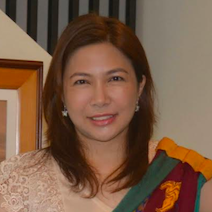

In a popular noontime show, Ryan Bang, a South Korean television personality, banters with fellow Koreans who joined the show as contestants. The scene would have been straight out of a Korean variety show had it not been for the fact that the conversation was in Filipino. The banter immediately went viral on Twitter. Twenty years ago, this scene would have been unimaginable.
Today, more than ever, Filipino audiences can very well relate to this for obvious reasons. In recent years, anything Korea-related has undoubtedly swept the Philippines – restaurants, beauty salons, cosmetics, not to mention Korean pop music and TV dramas. Some leading Filipino-owned clothing brands now use Korean idols as models too. Dr. Jason Cabanes says this could mean that dressing like a Korean entertainer has achieved “aspirational status.”
Koreans have been coming to the Philippines from pre-colonial times on to the 21st century, writes Kanako Kutsumi. Nonetheless, their current presence in the Philippines has been amplified by the parallel rise of Hallyu and Korean pop culture.
According to a report, 93,093 Koreans are living in the Philippines as of 2017. Meanwhile, based on foreign arrivals data from the Department of Tourism (DOT), Koreans have already outnumbered Americans in 2006. In 2018, their numbers reached 1.62 million, with the Chinese and Americans only second and third in terms of percentage in the total number of arrivals. Remarkably, this represents an exponential increase considering that less than 500,000 Koreans arrived in the country in 2005. In 2017, Korea’s Ministry of Foreign Affairs (MOFA) listed the Philippines as one of the top 10 countries hosting Korean migrants, second to Vietnam in Southeast Asia.
South Korea and the Philippines have had close ties owing to their shared history in the Korean War, economic and trade relations, and people-to-people exchange. A free trade agreement (FTA) is in the negotiation stage at the moment. But there are many reasons why Koreans love the country. Popular reasons include less expensive education and English language lessons, business and trade, retirement, and tourism. Flights to and from South Korea have also increased.
However, there are other ways Koreans appreciate the Philippines. In a previous research[H1], some Koreans like the Philippines because here, they can afford the middle-class life that remains elusive to them in their country of origin. Not only is unemployment on the rise in Korea, but the strict adherence to a punishing work ethic has affected most Koreans’ quality of life. Understandably, some are attracted to the Philippines’ relaxed atmosphere and less fast-paced society.
Because of their visibility and the amplified effect on their cultural products, there would ideally be expansive media coverage of South Korea, its people, and anything related to it. Such is a form of soft power, a term first coined by Joseph Nye in 1990, referring to a country’s cultural linkages with other countries, thereby enhancing its national image. Others call it nation branding or a form of public diplomacy.
The Korea Research Center of the University of the Philippines recently conducted a content analysis of references to “South Korea” in the online news site of a major network in the Philippines from 2009 to 2018. Within the 10 years, the 2011 to 2015 period had an upward trend in coverage. The peak was 2017, a period when the brutal murder of South Korean businessman Jee Ick Joo hogged the headlines. The top 5 major themes covered by the news were entertainment, politics, Filipinos in Korea, business, and Koreans in the Philippines. The last two themes are quite far behind. In the years 2010-2015, entertainment news was the number one generator of news about South Korea; in the rest of the years, it is a close second. From 2016-2018, political news got the most media attention. Nonetheless, entertainment still tops the list of news about South Korea. In the past 10 years, entertainment news tops media coverage of South Korea.
The prominence of entertainment news in which “South Korea” is mentioned in the 10 years indicates that the Hallyu trend has indeed figured in media coverage of the East Asian country. When the news media extensively covers the Hallyu trend, then it makes the latter an even more significant part of Filipinos’ collective imagination. It certainly benefits South Korea in terms of inbound tourism, culture, media, cosmetics, and food exports. It also makes Filipinos more aware of South Korea compared to 15 or 20 years ago.
However, it does not necessarily result in high public trust. In 2018, results of a survey showed that South Korea only registered 14% public trust rating among Filipinos, a laggard compared to the United States of America (74%), Japan (45%), and Australia (322%). China (17%), which has confict with the Philippines with regards to the West Philippine Sea, enjoys higher trust among Filipinos compared to South Korea.
What this suggests is that Korea has to beef up its strategies of national branding beyond Hallyu. It might be the case that there is disjoint in the ways Filipinos look at Hallyu, South Korea, and Koreans. Despite their media and public visibility, discrimination still takes place. The rise in media coverage of the Jee Ick Joo murder case likewise can be said to have surfaced Koreans as associated with crimes, and therefore a “problem.” Such portrayals are usually the case for immigrants in most countries in the world.
Overall, South Korea’s next phase of state branding must transcend the Hallyu trend. It can, however, build from the awareness generated by its cultural products and promote other aspects of its image to establish deeper and long-lasting ties in the Philippines and beyond. In this regard, Koreans in the Philippines can be ambassadors of this new strategy. Korean associations in the country can link more with local NGOs and the media to enhance public visibility. Such a move is meant to counter reports indicating that Koreans tend to live and work within their ethnic communities, thereby limiting their interaction among Filipinos.
In an analysis of Korea’s public diplomacy, its citizens and civil society organizations are encouraged to provide support to enhance Korea’s image sustainably. By having active engagement with Filipinos and local communities, Koreans in the Philippines can contribute to this call. For its part, the Philippines can use the presence of Koreans in the Philippines to assess its immigration policies. It should begin to take a hard look at its increasing role as a migrant-receiving country even as it dominates overseas employment.
A report by the Mckinsey Global Institute claims that immigrants boost economic output for as long as they are well-integrated in host societies. As it continues to develop increased trade relations with South Korea and the rest of the world, the Philippines has to create sustainable immigration policies and programs. Such can make the Philippines a more welcoming and safer place to study, retire, work, and reside for immigrants. – Rappler.com
Jean Encinas-Franco is an Assistant Professor at the UP Department of Political Science and a Research Fellow of the UP Korea Research Center in 2019.